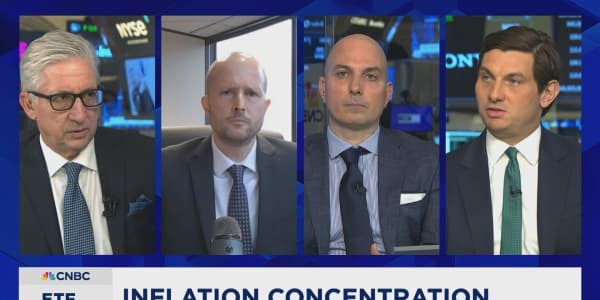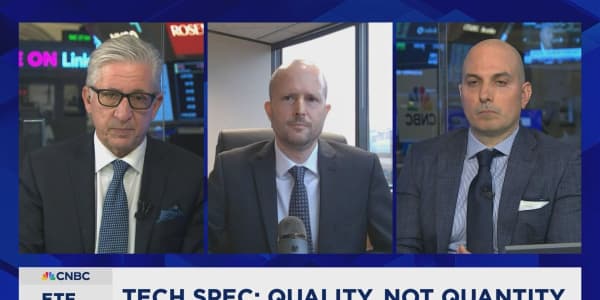
Follow the Fed.
In short, that is DataTrek Research co-founder Nick Colas's advice for investors looking to add to the inflows in bond-based exchange-traded funds.
The Federal Reserve surprised investors with its recent decision to support the corporate bond market by buying some of its investment-grade assets and the exchange-traded funds that hold them.
Unsurprisingly, that unprecedented move should bode well for buyers of corporate bond ETFs, Colas said Monday on CNBC's "ETF Edge."
Investors would do well to remember that as they choose between investment-grade bond funds and high-yielding bond funds as the global search for yield rages on, the researcher said.
After all, high-yield ETFs are "a lot like stock funds," Colas said, adding that his data "clearly" shows a high correlation between equity fund and high-yield fund performance.
"You're getting, basically, a yield pickup with a[n] equity-like, in your term, risk profile," he said. Stocks fell on Friday to close out yet another week of volatile trading.
"It's important to understand, though, that the Fed chose the investment-grade market to backstop and not the high-yield market," Colas said. "So, for investors looking for some yield but wanting that bigger backstop, then the investment-grade side is the way to go."
There's also a key reason why the Fed chose the investment-grade side of the bond market to cushion, he said.
"Twenty-five percent of LQD is financials," Colas said, referring to iShares' iBoxx $ Investment Grade Corporate Bond ETF. "The big banks are 14% of LQD. So, the Fed had to backstop that. And, in the Fed's stress tests, the triple-B market is part of the framework. The high-yield market is not. So, it's a riskier perspective."
The LQD fell less than half of 1% in Friday's trading session. It is down nearly 5.5% year to date.





